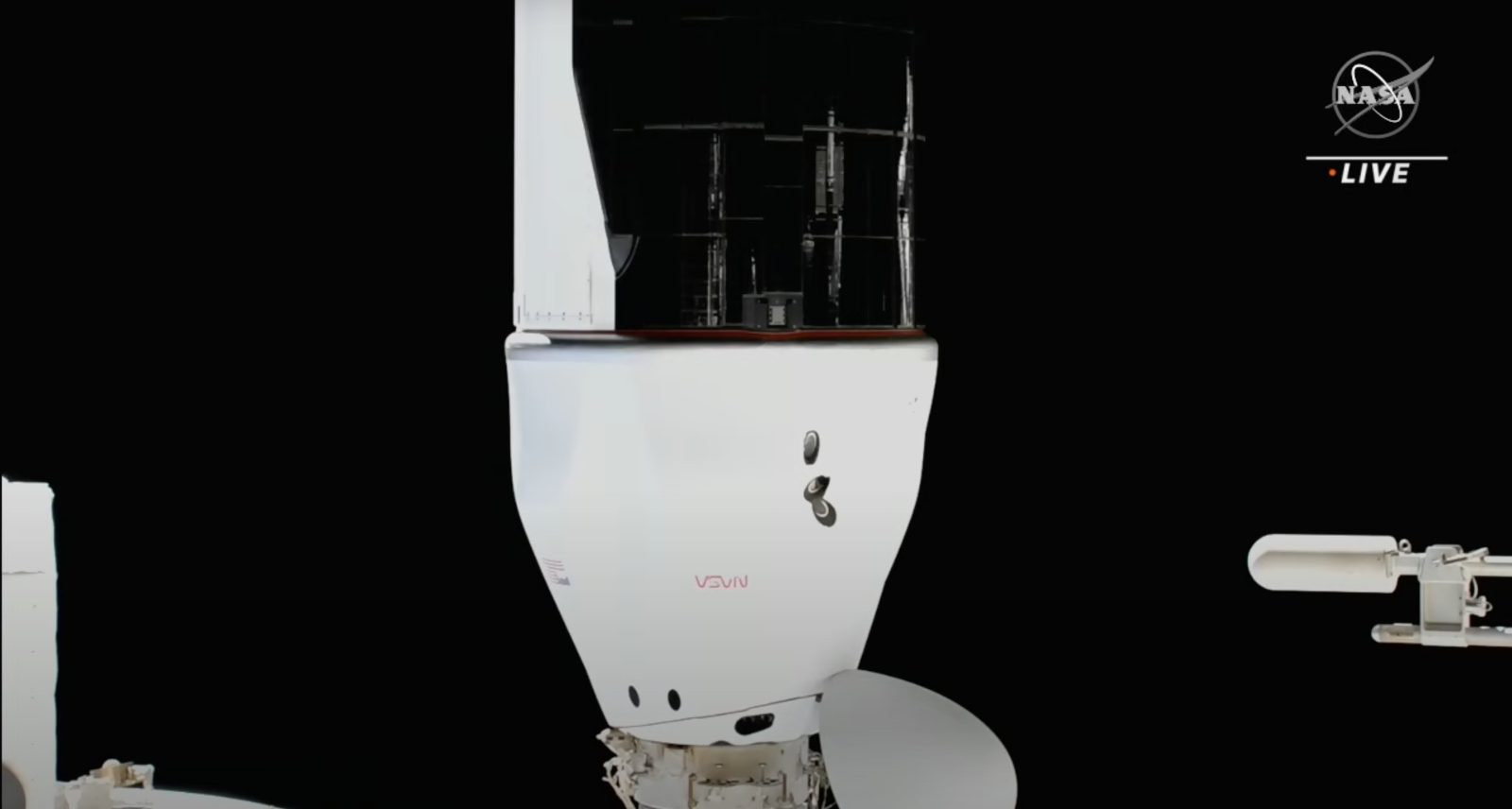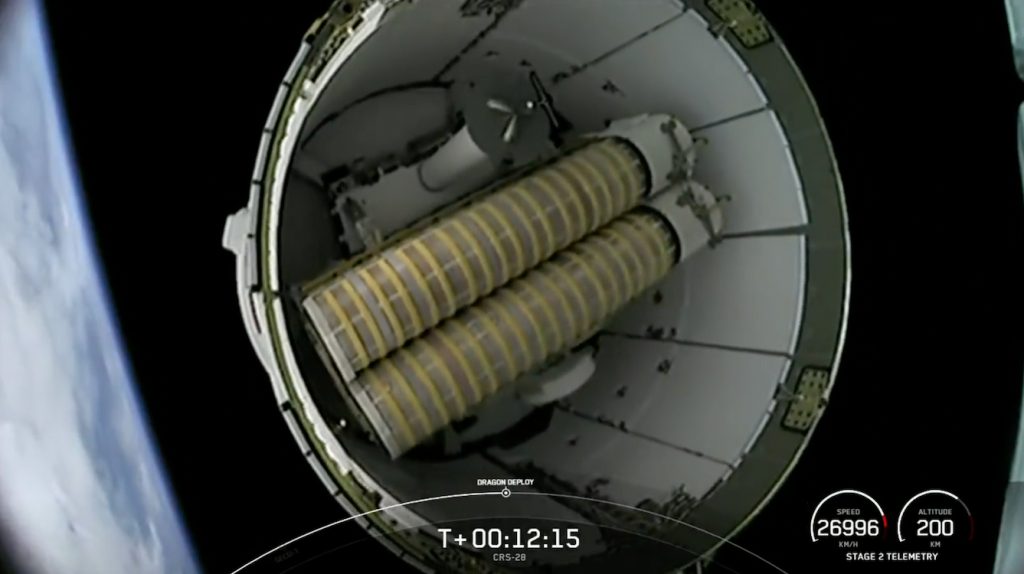
Early Tuesday morning, SpaceX’s Dragon spacecraft arrived and docked with the International Space Station. On board were 7,000 pounds of supplies for the Expedition 69 crew, including new experiments, CubeSats to deploy, and even fresh fruit for the crew to enjoy.
New solar panels on their way to the ISS
In Dragon’s trunk are two iROSAs, International Space Station Roll Out Solar Arrays; these new solar panels will be extended in front of the existing panels. While the ISS has the largest solar panels ever launched into space, they are 20 years old and experiencing denigration of their ability to produce power.
Like many of us experiencing our higher 20s, we don’t operate as well as we used to, and it just goes downhill from here.
So instead of replacing the solar panels, NASA came up with a brilliant plan because, you know, they are NASA. It’s kind of what they do. These new solar panels, which are smaller yet much more powerful than the original panels thanks to an increase in solar technology, will be attached to the ISS truss structures and rolled out in front of the old ones. So far, four have already been deployed across a series of spacewalks in 2021 and 2022. The two in CRS-28’s trunk will b removed using the ISS Canadarm and installed sometime this year.

ISS National Lab sponsored experiments
Alongside the new solar panels are several experiments sponsored by the ISS National Laboratory. The ISS is, of course, an orbital research lab. Some are created by students, others by national space agencies, buts there is a lot of stuff being sent up there from all over the industry.
First, a group of CubeSats is onboard CRS-28 to be deployed by Nanoracks’ airlock over the next year. Five come from Canadian students and one from the Aerospace Corporation and US Air and Space Forces. The later CubeSat will be used as a test for on-orbit cyber security, with students having the ability to try to hack it.
Some grade to high schoolers also sent a DNA experiment to the space station in a part of the Genes in Space program funded by Boeing. Not sure what grade schoolers are doing now in class, but all I remember doing is a lot of frog and shellfish dissection. Check out the rest of the ISS National Lab missions here.
Join our Discord Server: Join the community with forums and chatrooms about space!
SpaceX on pace for possibly eight Dragon flights in 2023
This was the fourth Dragon spacecraft SpaceX launched in 2023, and it won’t be the last. Two Dragons carried crews of four to the space station, Crew-6, who is still on board, and Axiom-2, who returned the other week. The other two, including this one, were cargo missions.
If current launch dates hold, which is rarely the case, four more Dragons could be launched with 12 more crew members and another cargo mission set for December. Two of those crewed missions are private missions, so the dates are pretty fluid. One mission is for Polaris, and another is the third Axiom flight, which we don’t know much about other than it will feature Turkish and Italian customers.
It is yet another major breakthrough for SpaceX in 2023, between the best launch rate yet, and the beginning of Starship flights out of Texas. Eight possible Dragon flights just sound expected at this point.
FTC: We use income earning auto affiliate links. More.

Comments